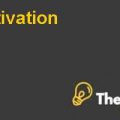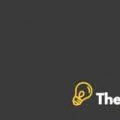
Internal Competition - A Curse for Team Performance
Evaluate and discuss the dysfunctional characteristics of the team and its impact on the organization
The case “Internal Competition - A Curse for Team Performance” discusses the various issues which a company faced while completing a project in New Jersey. The company which is an Indian entity specializes in financial consulting and financial advisory to clients across the globe. The company also assisted clients in the implementation of an enterprise's application. It offered on-site and off-site services based on the client’s requirements. Therefore, FIS consultancy was serving in the service industry to train and advice on financial and other solutions. The company even helped in expanding and developing of ERP training materials to support clients and implement ERP projects for businesses. The consultancy firm being a part of the service industry comprised of two to twenty five member teams depending on the requirement and deadline of a project.
A project team working on client projects usually included a project manager, a team leader, senior developers and junior developers. The issue or the problem identified in the case is the appraisal system and its credibility that actually led to conflicts and problems among team members which ultimately resulted in an unsatisfied customer. The appraisal positive or negative feedback was solely relied upon the report presented by the project manager. There were three levels of employee’s appraisal (a) below expectations (b) met expectations and (c) exceeded expectations. Although working as a team on the project, the appraisal system’s criteria was dependant on an individual’s performance rather than being judged on the performance of the group as a whole . With such an appraisal system each team member was looking to complete the task assigned to them and were willing to help their companions rather than helping other group members. This appraisal system at FIS Consultancy was the main reason that made the group members work as single units rather than helping each other. Along with this not all employees at the project in New Jersey were committed to perform with dedication and commitment. Sara and Shalini were the real star performers at the project and were willing to share ideas and knowledge with other colleagues, but they were not being supported by the team leader namely Philly and the team leader, Rishi. Both Philly and Rishi were not serious about the project and transferred their duties and responsibilities on others. The differing group values, different process goals and the inter-personal differences among all team members were one of the reasons for dysfunctional conflict, which had an impact on the team development process in a negative manner.
Another source or the reason for dysfunctional conflict was the resource constraints among team members. For instance, Sidharth refused to share critical data with Sara and insisted that she should spend the same amount of time that he had spent on collecting the data. This attitude is not the right one when working in a team to complete a common project. Team members were actually working in groups within a group and were unwilling to help each other. Although team members should have supported each other, they were actually hindering each other’s work. In the incident of Sidharth and Sarah, Sidharth not only refused Sarah to share information but instead he gave the same information to another group member.
Lack of trust was also evident among team members, Rishi used to gossip about Sarah regarding her lack of knowledge and incompetency with other group members. Rather than sharing his concerns with Sarah he was discussing the issues with others that obviously created lack of trust among members. On the other hand, Philly seemed very casual with the work and did not even answer to mails, calls and meeting. This attitude of Philly actually made other groups members sit late after office hours to meet customer deadlines. Being the project head, he should have shown commitment to lead by example and to make other work on constructive lines. He was quite a biased personality who was influenced by others rather than his own judgements. Group cohesiveness was also lacking among the team because Rishibeing the team leader was not willing to take the responsibility of making the team to work as a single unit with a pre-developed contract within the group. With a contract, Rishi could have decided the responsibilities of each employee in the group already structured to meet deadlines and customer requirements.
The above discussed dysfunctional characteristics among employees at FIS Consultancy resulted in an unhappy client. The team at New Jersey was unable to meet customer deadline and was did not able to deliver the corrected project report to the client. This shattered the image of the company because the client was not satisfied with the report when he was presented the first draft. The client even complained to the Head Office about the incident because he was under delivered. The incident affected FIS Consultancy in a negative manner for which HR manager, Fernandez was looking to change the team so that this does not happen in the future. Rishi was immediately called upon the incidence as he was the team leader and was asked to explain the reason for the numbers of dissatisfied customer. This incident made Fernandes to think about that how a mature group of people can create such a conflict while working towards a common goal. He understood that the success of the project was not only dependent upon the technical expertise of the team only but in fact much more was................
This is just a sample partial case solution. Please place the order on the website to order your own originally done case solution.
FIS Consulting Services was a business process outsourcing company specializing in consulting and financial advisory services to global customers. This case deals with the offshore project team in the United States, which has been characterized in the group competitiveness, poor management and the sharing of resources, poor coordination, and limited cooperation. First of all, the team has developed a one-sided focus on achieving a high ranking certification, not the conclusion of the project as a team. The team was not the development of which is shown in the immaturity of the team. Poor management and a lack of ethics led the team to move forward with opposing beliefs, structural inconsistencies, lack of leadership and low cohesion. These factors have led to a decrease in the team's performance and stood as an obstacle to the progress of the project. In addition, these events damage the reputation of the firm. Human Resource Manager needed for urgent action to rescue the project team. "Hide on in Padhmanabhan Source: Richard Ivey School of Business Foundation 5 pages. Publication date: 07 May 2012. Prod. #: W12003-PDF-ENG











